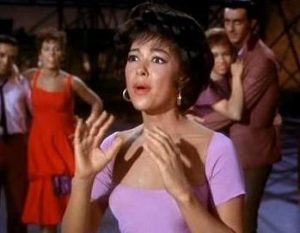From pyramids to hieroglyphics, it is no surprise that ancient Egypt is known for its strange, unique, and specific rituals that tie into their spirituality. Many of these rituals are precise and well thought out, in order to fit into their beliefs. One of the more important activities of the Egyptians was mummification. When the word is mentioned, frightening bodies wrapped in white strips of cloth is usually the first image that comes to mind. But why did the Egyptians take the time to prepare the deceased in this way, as well as make their tombs as glamorous as they did?

Many of us were taught about the Egyptians and their culture in primary school, but these lessons were fairly superficial in terms of the beliefs and reasoning behind their rituals. The ancient Egyptians had many views on death and the afterlife, all of which they took very seriously. According to them, humans all possess two souls or “doubles”; the “ka” and the “ba.”1 Both of these “doubles” were widely celebrated at an individual’s death. However the “ka” was the spirit that was more accommodated to in the tomb because it was understood that they needed to be nurtured in order for the deceased to be accepted into heaven, as well as for the prosperity of the people.2
The “ka” was said to be the spirit most associated with the identity of the deceased. A person would have no interaction with his or her “ka” until that individual had passed. Therefore, generally everything that was done to and for the body was also done for the “ka.”3 One of the reasons the preservation of the body (mummification) was performed was so the spirit would not be alone in the tombs.4 It was believed that the “ka” could bring the body back to life. People of the community would fill the tomb with items that they believed would please the spirit.5 Usually, these items included food, wine, and incense. The physical body was cleansed, dried, and wrapped to preserve the body and prevent the “ka” from a lack of nourishment.
Although it is interesting to learn the process of mummification and how it preserves the body, it is equally as satisfying to learn about the reasoning behind it. The Egyptians had many gods and spirits that contributed to their way of life, and the “ka” is no exception. It serves a basis for a good part of the mummification process, and gives more of an understanding as to why this process is necessary. 6
- E. A. Wallis Budge, Egyptian Religion (Routledge Revivals) : Egyptian Ideas of The Future Life (London: Routledge, 2013), 34. ↵
- John H. Taylor, Death and the Afterlife in Ancient Egypt (Chicago: University of Chicago Press, 2001), 19. ↵
- Budge, Egyptian Religion, 49. ↵
- Diana Craig Patch, Reflections of Greatness : Ancient Egypt at the Carnegie Museum of Natural History (Pittsburgh, Pa.: The Museum, 1990), 79. ↵
- Patch, Reflections of Greatness : Ancient Egypt at the Carnegie Museum of Natural History, 80. ↵
- Taylor, Death and the Afterlife in Ancient Egypt, 16-17. ↵



53 comments
Meadow Arriaga
This article is very interesting and informative. Although movies have focused mummies to be almost monster-like, they have meaning and purpose to the ancient Egyptian culture. It may make good entertainment to exaggerate the process of something so different than our culture does, but it is important to be educated on what the actual reasoning behind it. it’s amazing how different the understandings of what might happen after death is different from different parts of the rest of the world.
Chelsea Alvarez
I would have loved for this article to have been longer, because I was really interested in mummies and ancient Egyptian cultures. I really liked how you went into detail describing the two souls that humans possess. It was interesting to know that they found a person needed to be taken care of even when they were deceased. I feel like they believed in this so that they may not fear death.
Claudia Sanchez
very concise and informative article about an interesting topic. Mummification has always remained a mystery to me and its nice to know there was spiritual reasoning behind the practice. In a way, it reminds me of Dia de Los Muertos in that they both commemorate the dead with placing things they love like food and such. So in a way w are not too far off from the Egyptians and their burial styles.
Antonio Coffee
Mummification is a pretty interesting topic and I had never really learned why it was done. I had never heard that the Egyptians believed that people had two souls, ka and ba. This is a new idea to me. I did not know much about the Egyptian religion besides some beliefs about the gods.
Hali Garcia
This is a very well written and informative article. When I was a kid I was interested in learning about mummies. It is interesting learning about the mummification process as well as what the purpose of it was. I loved how you included the ba because that was something that I never heard of. What struck me was how the Egyptians would leave items in the tombs for the spirits to use in the afterlife.
Eric Ortega Rodriguez
As a kid, I would always watch Halloween animated movies, and every one that I watched, there would always be a mummy. This article does a good job in providing a sweet and short summary on the meaning behind mummification in the Egyptian culture. As I read this article, what I found the most interesting was that Egyptians believed that humans possessed two souls. Overall, great article with a very interesting topic selection. Good work.
Fatima Navarro
Very informative article, interesting too. I had no idea the process of mummification and this was a short but good read. I’d like to add how I wish this article could have been a little longer. Maybe, give an example of one of the mummies and relate its “ka” and “ba” and explain it further. It would also have been good to add more information regarding these “two souls.”
Averie Mendez
Good article! I liked that you included some information on “ka” and “ba,” because it’s something I had never heard of before. I also liked that you included that the Egyptians would fill tombs with things they believed would please the spirit. In that way, I see similarities to Mexican culture (e.g. leaving goods for ancestors on Dia de los Muertos).
Madison Guerra
This article was very interesting and it provided me with information i never knew about mummies. It was interesting to learn how they believed there were different parts of the soul and which part should be celebrated. I also liked how the author explained how the process of mummification was taken so seriously. It it was not done properly than something bad would happen. The article provided a lot of information also about how The “ka” spirit could bring the bodies back to life if pleased enough.
Martina Rodriguez
I loved how the article began by addressing the cinematic conception we have of mummies as well as the very limited education on Egyptian culture we received in elementary school. For example, I had never even heard of the Ka or the Ba before this article. More specifically, I had no idea there was a specific goal to mummification as mentioned in relation to the Ka.